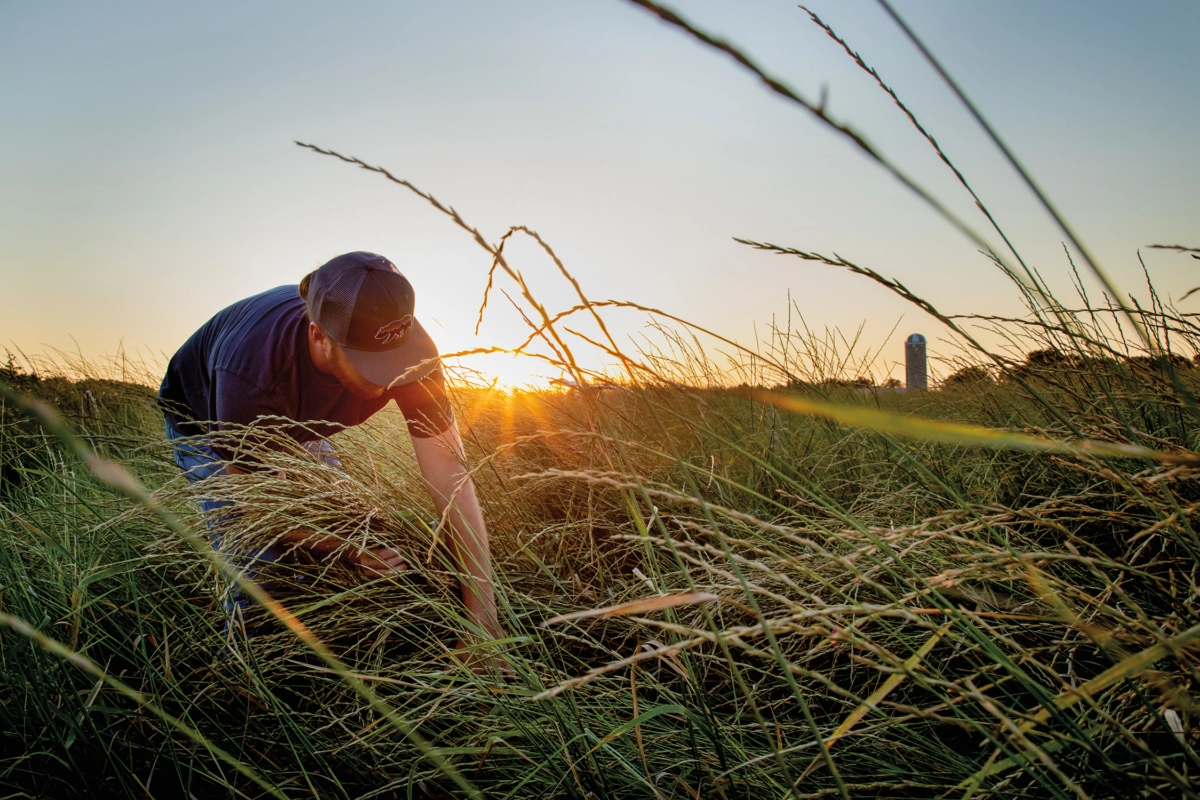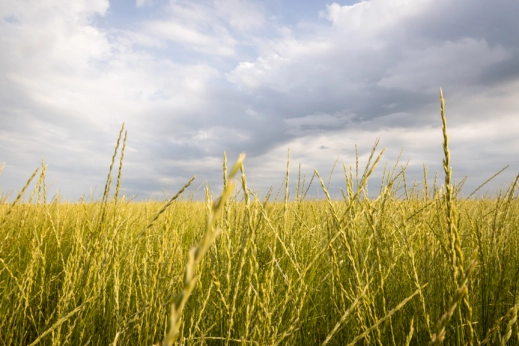Using new grains and varietals, researchers and brewers are working to save the future of beer.

According to a 2021 poll, the US drinks the second-most amount of beer in the entire world, a whopping 24 million kiloliters annually or 13 percent of the global market share. The American Malting Barley Association (AMBA) estimates that 67 percent of all barley grown in the US goes into beer. Americans, it seems, love beer. But as our summers continue to get hotter, the higher temperatures can cause heat stress to barley, resulting in decreased yields. This is bad news for brewing and, ultimately, the beer in your glass.
Drought conditions can drive up the protein levels in barley, which means lower fermentable extract in the brewhouse and, ultimately, this leads to higher grain costs for brewers. Plus, high-protein grain can give malts a darker color, which means a hazier appearance in the beer; it’s particularly unfortunate for brewers aiming for a paler beer style with brilliant clarity.
It’s not just dry weather that causes problems for beer’s key crop—if it’s too hot or too wet, barley also suffers from increased disease and pest pressure. Too much moisture at the wrong time can also pose problems for farmers before the crop is even in the ground, by creating soils that are easily compacted when tilled or driven on. Like many crops, barley can be finicky, needing the right conditions to flourish.
As weather becomes more erratic, most regions that currently grow barley will encounter issues of some kind. But a greater variety of barley offers more options to farmers and, ultimately, more tools to mitigate the impacts of climate change. “One of the strategies that we’re going to have to employ, I believe, is to have more barley, and more diverse barley, grown in more places,” says Patrick Hayes, professor of barley breeding and genetics at Oregon State University.
Hayes has been working on barley varieties that are suitable for planting in the fall and winter. He developed Thunder, a two-row winter barley, which is on AMBA’s recommended variety list. “The rationale for the fall planting is that, in many areas, you can capitalize on available precipitation and, thus, indirectly achieve greater water use efficiency,” says Hayes. Another of Hayes’ developed varieties is Lightning, a promising barley that shows resistance to diseases. Lightning is facultative, meaning it does not require exposure to a prolonged cold period in order to flower, and it can, therefore, be planted in either fall or spring. It also shows resistance to pre-harvest sprouting—a highly desired characteristic for malting barley, since the malting process requires germination.
In the Midwest—where barley was much more plentiful prior to Prohibition—there’s yet more interest in winter barley. Origin Malt in Ohio works closely with the farmers that grow Puffin, a proprietary winter malting barley that was bred to tolerate the extremely cold winters common in the corn belt. Meanwhile, at the University of Minnesota’s Smith Lab, the team is also focused on winter barley, which could solve other problems that farmers face in the Midwest. For example, very wet soils during the springtime can delay the planting of conventional spring barley varieties. “Growers are often waiting to plant, for the soil to dry out,” says Kevin Smith, professor of plant breeding and genetics. In addition, winter barley will be ready for harvest earlier in the year, which will help it to avoid diseases that typically affect spring barley late in its growing season.
As well as helping to shore up beer production for the future, winter barley can be part of a continuous living cover system. When paired with a summer annual, it can benefit ecosystems and improve soil health. “We have an experiment with winter barley and soybeans,” says Smith. “That could actually be a profitable system for farmers.”

Kernza in the field. Photography courtesy of Patagonia Provisions.
As farmers and brewers seek to play their part in looking after our land for the long term, some believe that perennial grains are an important aspect of this. One such grain that has gained some traction with brewers is Kernza, the trademarked name of a strain of wheatgrass. It has long roots that remain in the ground year after year, which help to prevent soil erosion and sequester carbon. Sandy Boss Febbo, owner and brewer at Bang Brewing in Saint Paul, MN, has been brewing with Kernza for more than six years. She says seeing Kernza in the ground really brings home the difference with the root structure, compared with annual wheat. “To see the soil benefits in real time is pretty incredible,” she says, referencing a dig-out at a Kernza farm, where she saw a root structure more than eight feet deep.
Patagonia Provisions released a beer made with regenerative organic certified Kernza in 2016. “We saw an opportunity to try to create some market demand for a type of grain that really hasn’t had much success yet in the market, that’s unusually good for the planet,” says Paul Lightfoot, general manager of Patagonia Provisions. The company recently launched the Good Grain Collaborative, a program in which 11 partner breweries, including Bang Brewing, will each brew a Kernza lager using regionally sourced organic ingredients.
Some brewers have described Kernza as having a spicy flavor, while others say that it has a nutty note. “It’s such a beautiful grain,” says Boss Febbo. While using the flavorful Kernza in the brewhouse is rewarding for many brewers, it is not without challenges. The smaller Kernza seeds make it tricky for brewers to mill themselves. When brewing with raw Kernza, malted barley is still needed, as malt has the enzymes required to convert starch into fermentable sugars. And since the supply markets for Kernza are small right now, the grain price is higher. “Our goal is to bring the prices down as demand and as volume scales up,” says Lightfoot.
For now, alternative grains such as Kernza are promising but nascent. For new barley varieties to make their way into our beer, malt houses will need to get on board. Many of them could be unwilling to contract entirely for a brand-new variety right away, so more markets for barley must be found. “As we think about developing better malting barleys of different sorts to deal with climate change,” says Hayes, “we also have to work together to develop those other markets so that farmers aren’t just left sitting with this stuff.”